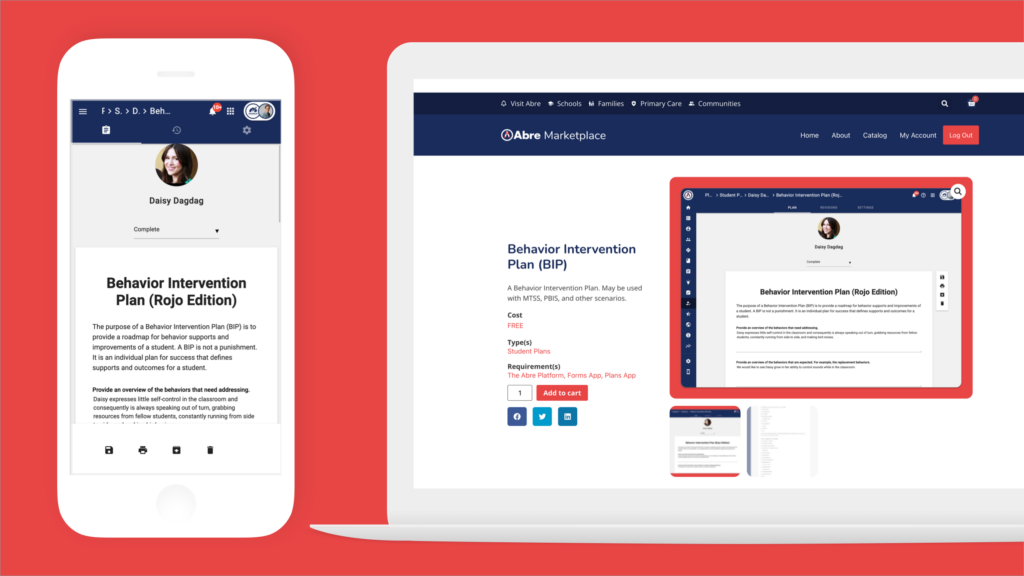In our last post, we covered how schools can use Abre for screening students and identifying which kiddoes need additional interventions. Students who require additional support usually need support in either behavior or academics (sometimes both). For behavior support, schools typically use a Behavior Intervention Plan (BIP) to address student challenges.
Behavior Intervention Plans are created using Abre’s Forms and Plans Apps. The Forms App enables a school to drag and drop fields into a cohesive plan template for a student. For example, you may want:
- An overview of behavior that needs addressing
- A definition of the behaviors you want to see
- How will those behaviors be taught?
- What accommodations and interventions will be put in place
- Etc.
With our Forms App, the process is as easy as dragging and dropping fields to answer those questions.
Once Created, It’s Time to Complete the Plan with the Identified Student
Recall that we’ve already identified students in need of Behavior Intervention Plans in our previous post. To add a behavior plan to a student:
- Navigate to Students Plans
- Search for your student
- Add the Behavior Intervention Plan
- Complete the Plan
Like What You See? No Need To Create!
The BIP you’ve viewed in these examples exists in our MarketPlace. If you’re an Abre Customer and would like to use or modify the plan, simply add it to your cart. The plan is free to all customers who have the Plans App.

What About Updating and Monitoring Growth?
Monitoring growth is an essential part of the MTSS process. We will cover this in a future post, but you can modify a Behavior Intervention Plan to record “growth periods” that record if and when growth occurs.
Next Post: RTI
Academic plans are the other type of intervention plan involved in the MTSS process. Our next post will demonstrate how to use RTI plans for tier 2 and 3 interventions.
Related posts:
What is MTSS? A fun primer on Multi-Tiered Systems of Support
Multi-Tiered Systems of Support (MTSS) is an incredibly effective framework for increasing student success. At Abre, we’re big fans of practical methods for supporting students. MTSS is a valuable framework that delivers results....
Screening Students for Multi-Tiered Systems of Supports: A Practical Guide.
This first stage of an effective MTSS framework is Screening. Learn a practical and easy way to screen your students with Abre....
Consolidating Resources Using Abre Shortcuts
Whether school starts online or in person, the reality is that schools use a variety of online tools in the education process. This collection of tools can get messy. Students, staff, and families can easily find themselves in a situation...

